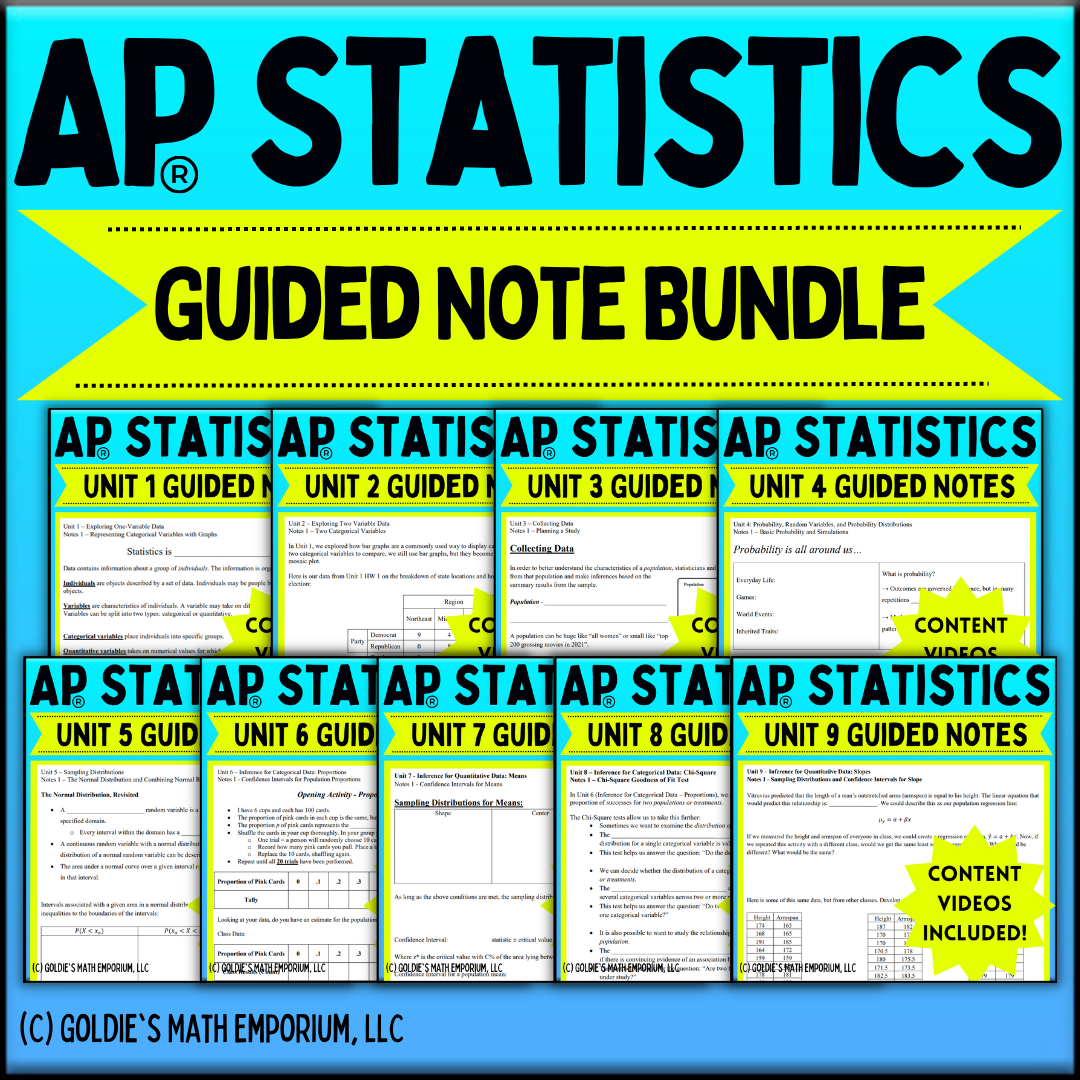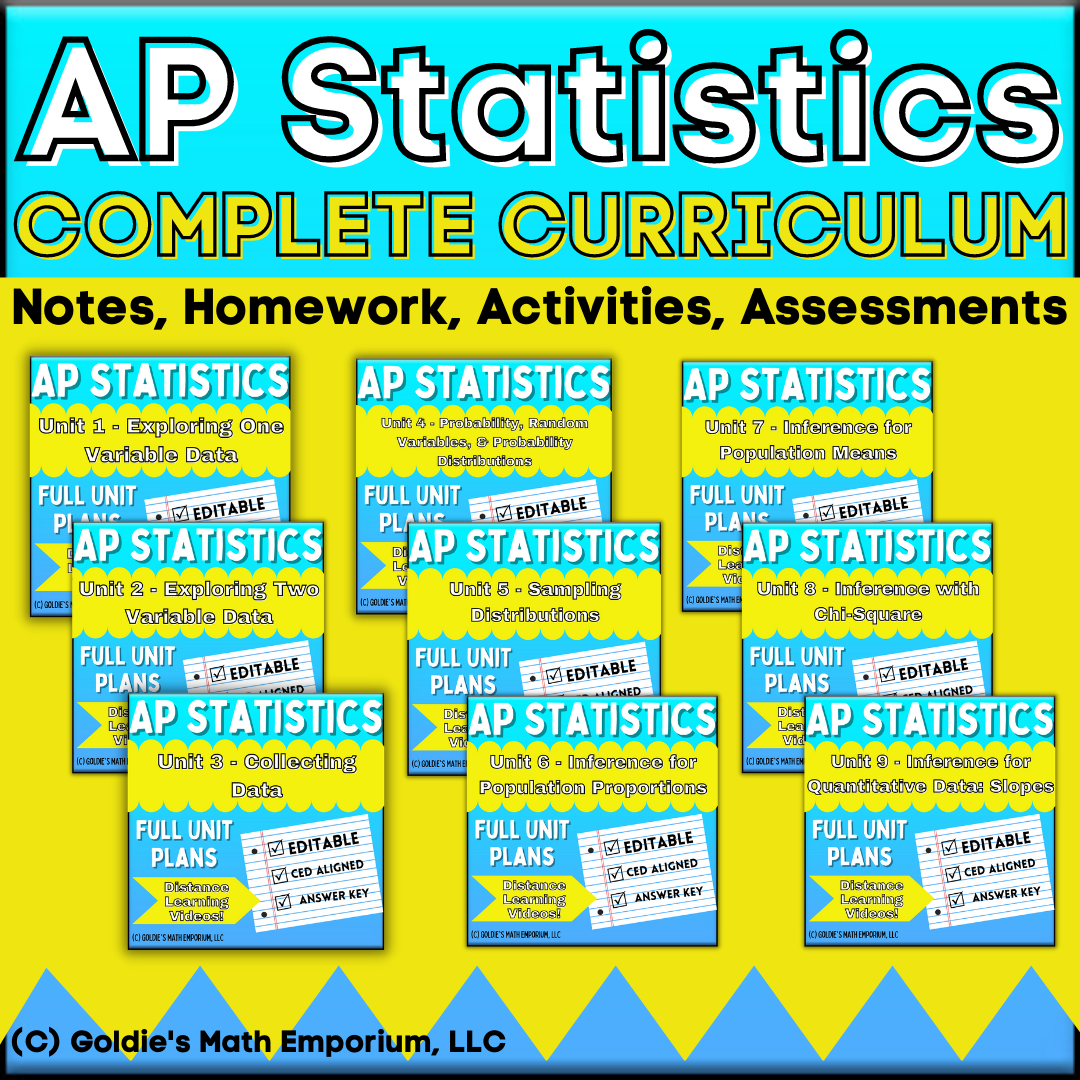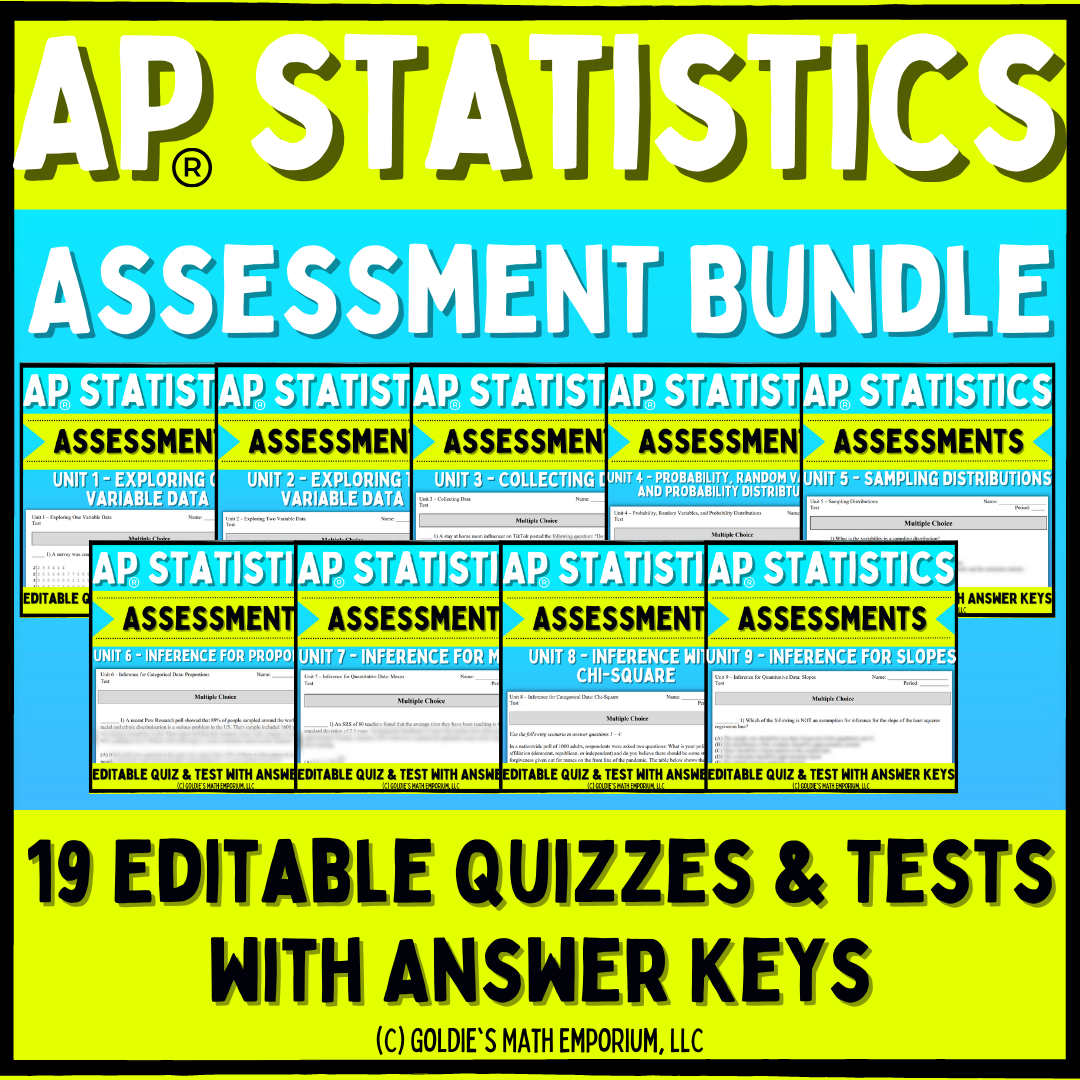Seven units down and two more to go! We are in the second to last unit in AP Statistics – Inference for Categorical Data: Chi-Square. By now, your students should be well versed in everything inference, and we get to expand on that by introducing a new test statistic: the chi-square test statistic. (Pronounced “kai” not “chai”!) Keep reading to get some tips for your own classroom!

In this unit, I like to dive right into the first section of notes. If your students have taken (or are currently taking) AP Biology, they would have already heard of the Chi-Square Goodness of Fit Test! Much of the test is set up the same way as in AP Biology, but in AP Statistics, we include more information (we pay closer attention to the conditions and writing out the details of the test), and the conclusions are also different. The AP Biology class currently used the phrasing “reject the null hypothesis or accept the null hypothesis” when writing their conclusions. Be aware of this and just know that this is something you will have to “unteach” for the AP Statistics exam!
Some teachers like starting with the Unit 8 M&M activity before the notes, which is totally doable! By now, students are familiar with enough of the inference procedures to be able to run a chi-square goodness of fit test by following the instructions in the activity.
The distinction between the Chi-Square test for Homogeneity and the Chi-Square test for Association/Independence is important for the exam! The hypotheses are worded differently but otherwise, the tests run the same. I really try and draw my students’ attention to HOW the data was collected, in order to determine what test to use. Sometimes, the problem can indicate what test to run (i.e. “Do the data provide convincing evidence that x and y are associated?”), but I want them to really understand that the difference comes in how the data was collected.
The Chi-Square test for Homogeneity takes two or more samples from 2 or more unique populations, whereas the Chi-Square test for Association/Independence takes a single sample, from a single population.
After the three sections of notes on all of the chi-square tests, you have the option of how you want to review all the tests together. I used to do a “Notes 4” where we compared the three chi-square tests. Recently, I made instead, a Unit 8 summary lesson where students fill in a handout while I click through the summary slides. They then have the rest of the class period to start working on the test review. The option is yours; both of these lessons are included!
The Mad Libs activity is a great way to review chi-square multiple choice problems in a fun way. Teachers print and post the ten stations around the room. Give each student the worksheet (on the next page) to record their work as they travel to the stations. Put students in groups of 3 – 4 and assign them to a starting problem. Set the timer for 4 minutes (more if needed). Students will work through the problems and find their answer. They look for their answer and record the piece to the story. When the timer goes off, they move to the next station. You get the editable versions too, so you can edit to make your own Mad Libs story for your students!
Overall, this unit takes me about 10 days (2 weeks) to complete. We are really starting to feel the AP exam time crunch, and I always have to remind myself not to go too fast in order to make it to the review days! Unit 8 can still be a great way to review inference by reminding them of how similar these were to earlier problems; they still have to define their hypothesis, check conditions, come up with the statistics and p-value, and state their conclusions appropriately.
Happy Inferencing!
Here are some FREE materials to help you with your class!









0 Comments